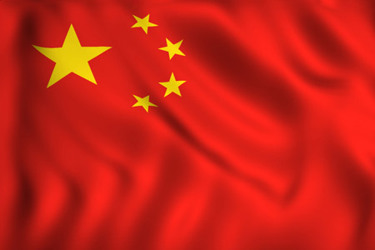Sovereignty In Orbit: China's Guowang & Qianfan Take On Starlink

By John Oncea, Editor

China’s attempt to build a Starlink competitor, led by its national initiative Guowang, has rapidly evolved into a symbol of China’s determination to control space-based internet infrastructure as a matter of national sovereignty rather than merely a commercial venture.
In the early 2020s, Beijing consolidated multiple competing satellite programs under the state-led China Satellite Network Group (China SatNet), creating what is now known as the Guowang or “National Network” program, according to the International Institute for Strategic Studies. This effort integrated earlier experimental projects, including provincial and municipal satellite constellations, into a national strategy focused on information infrastructure as a strategic component of China’s digital sovereignty.
Early precursor projects like Hongyun and Hongyan during the 2010s helped build China’s internal manufacturing capacity and technological expertise. These prototypes tested satellite manufacturing and inter-satellite laser links, laying the groundwork for the massive LEO constellation now being deployed. By consolidating these efforts under China SatNet, the country moved from experimentation to system-building, merging industrial modernization with national security objectives.
China’s policymakers explicitly frame Guowang as a tool for digital sovereignty, a means to ensure uninterrupted control over critical communications in peace and crisis. Demonstrations of satellite-enabled connectivity in recent conflicts worldwide have underscored the strategic advantage such networks provide, pushing Guowang into the core of China’s defense modernization and economic strategy.
China’s State-Led Approach Vs. Starlink’s Private Enterprise
Both Starlink and Guowang seek to deliver low Earth orbit broadband globally, yet their approaches reflect fundamentally different governance and economic models. SpaceX’s Starlink, fueled by private capital, rocket reusability innovations, and an agile commercial rollout strategy, emphasizes rapid iterative scaling based on consumer markets. It's roughly 9,000 satellites orbit mainly at around 550 km altitude, prioritizing minimal latency and global consumer reach, according to Aerospace America.
Guowang, in contrast, is a state-led endeavor under the central Chinese government and China SatNet’s oversight. Its constellation plans include over 13,000 satellites divided between orbits approximately 500–600 km, comparable to Starlink for low latency, and a higher orbit around 1,145 km designed for stable, broad coverage and redundancy, according to the French Institute of International Relations (Ifri).
This multi-tier design facilitates integration with terrestrial 5G and future 6G networks, supporting China’s focus on network resilience, dual-use military-civil applications, and tight state control, reflecting principles of informatized warfare doctrine.
The political-economic distinction also surfaces in deployment speed. Starlink’s commercial model enables fast iteration and mass adoption, whereas Guowang’s state-led, coordinated approach emphasizes security and sovereignty, sometimes sacrificing the pace of innovation for strategic reliability, according to the Center for Strategic International Studies.
Launches, Coverage, And Commercial Expansion In 2025
As of October 2025, Guowang has launched 89 operational satellites and 18 experimental ones, distributed between low Earth and higher orbits, marking steady progress toward nationwide coverage, according to Gunter's Space Page.
All satellites thus far have been placed either in the higher orbit, at around 1,145 km or at 900 km altitude, with plans underway to increase deployments in lower orbits. China has conducted successful batch launches with its Long March rocket family, including a notable deployment of nine satellites in mid-October 2025, bringing the constellation to a total of 95 satellites in space, according to China-in-Space.
Simultaneously, Qianfan – a Shanghai government-backed commercial satellite constellation – has launched 90 satellites out of a planned 15,000 and is expanding rapidly, targeting international markets in Asia, Africa, and Latin America. Recent deals include partnership talks with Brazil and customers in Kazakhstan, Malaysia, Oman, and Pakistan. Qianfan’s commercial momentum is boosting China’s space ecosystem, but it currently faces hardware reliability challenges that Guowang’s government-backed program does not, according to the Associated Press.
Notably, China’s satellite broadband infrastructure trials are progressing beyond deployment; integration with terrestrial 5G and 6G networks was validated successfully in 2025, underscoring the government’s “SkyNet” initiative to vertically link space, air, and ground-based communications for resilient and secure data flows throughout the country, according to the Mercator Institute for China Studies.
Future Trajectories: Geopolitics, Technology, And Competition In Orbit
Looking ahead, analysts foresee Guowang as a linchpin in China’s effort to exert technological and geopolitical leadership in space-based communications. The vast planned constellations seek not only to ensure domestic broadband ubiquity but also to project digital influence along China’s Belt and Road Initiative, potentially reshaping global connectivity standards in partner countries across Asia and Africa.
However, the next decade will test China’s ability to scale production, manage orbital debris risks, and negotiate increasingly crowded international regulatory environments. Interference, congestion, and frequency allocation disputes are emerging challenges; these situate low Earth orbit as a politically contested domain akin to terrestrial geopolitics.
Regardless of technical outcomes, these satellite networks crystallize China’s philosophy that control over information pathways from orbit to ground is a strategic imperative. The country’s space telecommunications strategy signals a new phase of multipolar internet governance and highlights the orbital arena as a critical frontier in great power competition.
China’s Guowang and Qianfan projects mark a decisive step toward embedding national sovereignty in space-based broadband infrastructure. While still developing its technical maturity compared to Starlink, China’s state-led, system-integrated approach advances a vision of network sovereignty that blends innovation with strategic discipline. As these constellations expand, they will reshape not only global internet access but also the geopolitical architecture of space itself.
